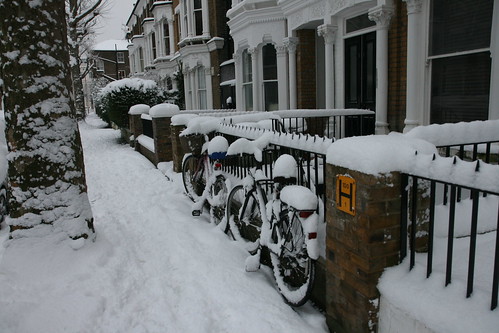
If you ask the average person from Australia what they think the weather in London is like, they’ll tell you it’s cold, miserable and not that sunny. Well, that’s mostly right, apart from the cold bit. Compared to other places at a similar latitude, London is actually pretty warm. So warm, that it hardly ever snows. When a few random snowflakes do fall, it’s a cause for excitement. The snow never lasts very long and it rarely settles on the ground. After a few hours, it’s all gone and London returns to its usual drab wintery grey. That’s what makes this week’s weather something very special.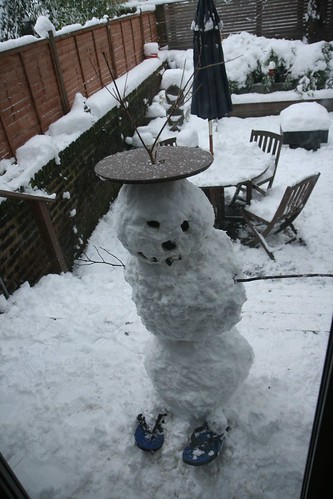
A few weeks back, we had a high pressure system sitting over the North Sea that was pumping freezing cold air from deepest Siberia into my garden. It was a novelty. Puddles in the street froze and the bird bath in my garden turned into one solid block of ice. Like I said, weather this cold is pretty unusual. I had the heating cranked up all day and night just to stay warm. After a few days, it passed and the thermometer gradually crept back to a normal level. That was it, we all thought. Winter was over. Time to start looking for the bulbs to start popping up and spring would be just around the corner.
Then the snow started falling. Then falling some more. Then falling and falling and falling and never seemed to want to stop. I was sitting in my study on the phone to my Dad when the first snowflakes started to fall. That’s the weird thing about having family on the other side of the planet. He was complaining about how stinking hot the weather was in Ballina. They were going through a heat wave. 35 plus degrees Celcius. Not pleasant. By the time I was off the phone, the few stray snowflakes had decided to get together and have a little party. They continued to get bigger and heavier until the whole garden was covered in a nice white sheen.
I went out to do a bit of shopping and by the time I came home, the whole garden was covered in about 1cm or so of snow. How cool. I instantly turned into a crazy snow obsessed antipodean and rushed about scraping enough snow together to make a feeble little snowman. It came up to just below my knee and was a lot of fun. I remember the first time I saw snow in London, I ran outside and giggled a lot. That was pretty feeble snow, I recall. It was mostly rain. No wonder the locals thought I was deranged. This snow never lasts, so I went off to bed dreaming of the sun back home.
When I got up the next morning, I had the fright of my life. I could no longer see me teeny tiny snowman. Usually it would have melted overnight. This morning, however, I couldn’t see my snowman, because he was covered, with SNOW. According to the meteorologists, about 25cm of snow had fallen overnight in the space of three hours. If that had fallen as rain, it would have been a tropical monsoon. Falling as snow, it turned all of London into one enormous ski field. It was the heaviest snow London had seen in twenty years. Awesome!
I started to get dressed for work, cursing my luck. The biggest snow fall in twenty years happens on a Monday. I’d have to wander off to work, get busy and look forlornly out the window at all the snow, locked away in my work prison, deprived of fun. Bugger!
Luck was on my side, however. I checked to see how my regular tube line was running, only to find that it wasn’t. Most of the tube lines were suspended and the few that were running weren’t going very fast. I then checked the trains. They were stuffed as well. Looks like there was no way I was going to work today. How cool. For an Australian growing up by the beach, the thought of being snowed in was pretty awesome. I was snowed in and I was loving it!
I dragged out my ski jacket, ski gloves and ski pants from the very back of my cupboard and got busy making the world’s largest snowman. Well, a quite large snowman. It was fracking awesome. Duncan was the master snowman builder, being Scottish and all. We soon had a snowman up to our chests, complete with scary teeth and demonic eyes. Very cool! I gave him that antipodean touch by equipping him with a pair of thongs (flip-flops for your foreign types).
Many years ago, the last time there was a big dump of snow in London, I was away on holidays somewhere. When I came back, some friends showed me some amazing photos that they had taken in the snow. I was very envious that I had missed it. That was about five years ago, so I was pretty keen to seize the day and take some of my own photos.
I rugged up in my ski gear and took the one tube line that was running into Kensington Gardens. What would normally have been a fifteen minute trip on the Central Line took close to forty-five. It was rammed, hot and sweaty, but well worth the effort. I came out of the Queensway tube station and entered a winter wonderland.
Kensington Gardens was covered in thick powdery snow up past your ankles. For other wintery places, this would not be any great cause for excitement. In London though, it was causing spontaneous celebrations. Dotted over the park were a huge number of snowmen. They were sprouting up everywhere. Surrounding them were huge groups of happy, smiling people. It was snowing, everyone had the day off and it wasn’t too cold. Everyone was in a state of euphoria. London can be a pretty miserable place at times, but today everyone was in happy mode. I giggled like a little school girl and leaped around in the snow, my trusty gumboots keeping my feet dry as I kicked up big clouds of snow.
I’ve been to Kensington Gardens hundreds of times, as I used to live just around the corner. I’d never seen so many happy people or so much snow before, though. Just in front of Kensington Palace, the sight of the sea of flowers after Princess Diana’s funeral, kids were screaming in delight as they tobogganed down the small hill. Everywhere I looked it was smiley faces and increasingly large snowmen. I took a huge number of happy snaps and just couldn’t stop smiling. It was a very special day.
Afterwards, I completed the tour and wandered across Hyde Park and over to the Australian War Memorial. It felt a little funny wiping away the layer of snow to expose the coat of arms. The kangaroo and the emu still look determined, but I could tell they were secretly feeling the cold.
By the time I’d walked past Buckingham Palace (Betty wasn’t home), St. James’s park and Trafalgar Square, I was a bit knackered. My gum boots had started to chafe in some very nasty places. I was cold, I was sore, but I was still smiling like a lunatic.
Finally, after a fresh torrent of snow started to fall in Westminster, I took some pics of Westminster Abbey, the Houses of Parliament and then retreated to the warmth of the tube for the trip home. It had been an amazing experience to see my city decked out in the winter finery. People often complain that February is miserable in London. Add a little snow though and it is transformed. I don’t think I’d like it to snow like this every week, but once every twenty years suits me fine.
Sunday, February 8, 2009
London in the Snow
Posted by
nosywombat
at
5:32 PM
4
comments
![]()
Labels: england, europe, feature, london, snow, uk
DiggIt! Del.icio.usMonday, February 4, 2008
Brisbane – The Voyage Home
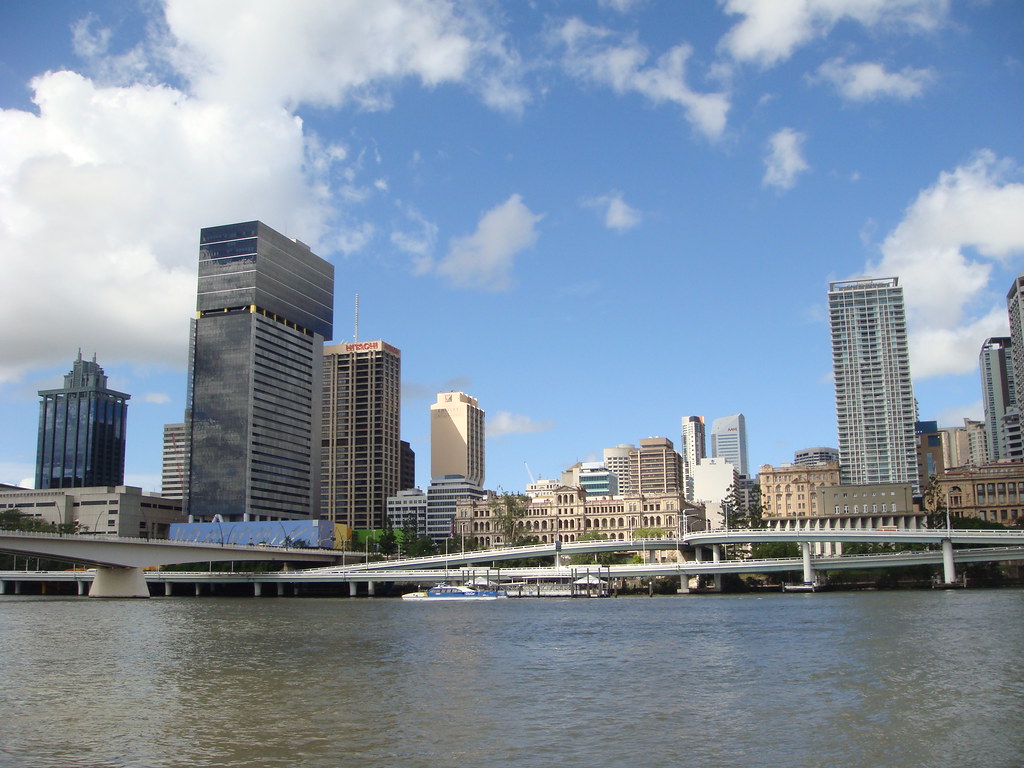
I haven’t lived in Brisbane for eight years. This was the city where I went to University, started my first professional job and made the transition from school kid to adult. I learned a lot in the seven years I lived here and now I was back. I’m here for a two month job, just long enough to skip the worst of the London winter, but not long enough to miss my London too much, or so I hoped. It was going to be an interesting trip, hopefully a good one.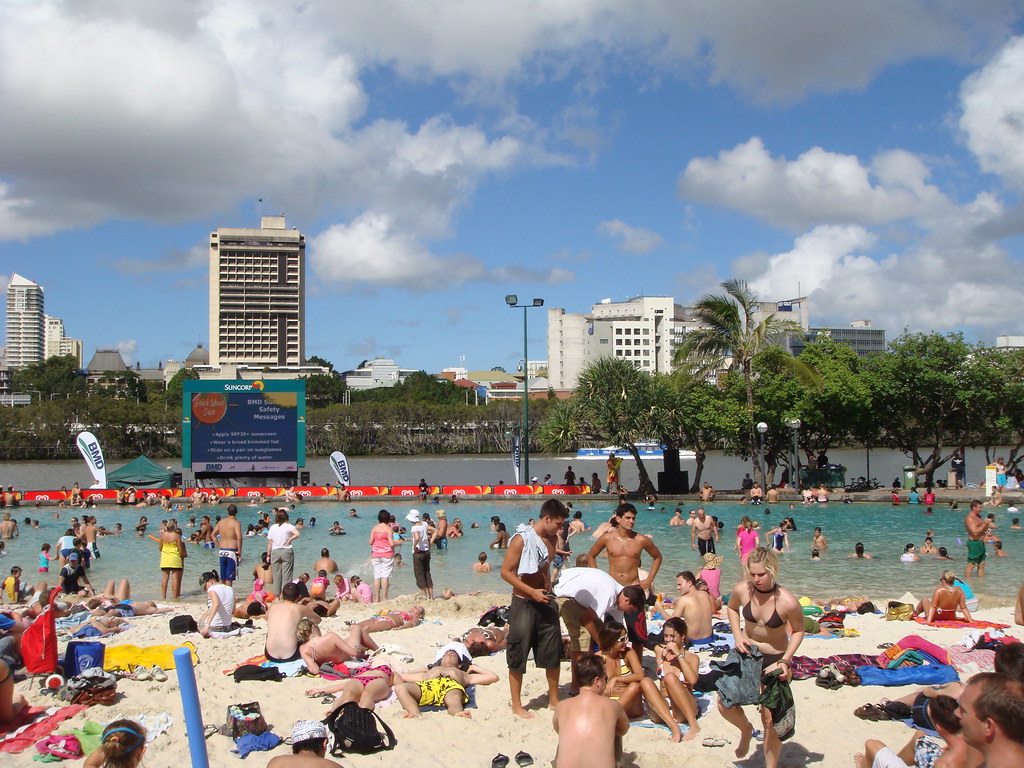
Brisbane is the capital city of Queensland, the state at the north east tip of Australia. It enjoys a sub tropical climate, with steamy hot summers and very mild winters. It’s a great place to lead an outdoor life, but in the not too distant past, Queensland was treated as a bit of a joke by the southern, more populated states. This was partly due to the twenty odd year rule by a very conservative government, headed by Sir Joh Bjelke Petersen. Queenslanders reveled in their conservative values, abundant sunshine and lack of anything resembling culture. In many ways, it was a social backwater that saw all the best and brightest citizens fleeing south to Sydney, Melbourne or overseas.
The standard joke growing up goes like this: “What’s the difference between Queensland and yoghurt”, to which the answer was “Yoghurt has an active culture”. I remember that eating on tables outside a restaurant on the street was banned as it was unhygienic. By the time I arrived in 1991, things had started to change. The conservative government had been tossed out and was busy being grilled by the Fitzgerald Royal Commission, which laid bare the endemic corruption of the State. Given a fresh start, Queenslanders were keen to catch up with the southern states.
By the time I left Brisbane for London in 2000, the city had come a long way. There was a thriving restaurant and café scene and a real buzz about the place. Coming back this year, I can see that this has continued. The Brisbane of 2008 is a completely different one to 1991. There are now restaurants on every corner, cafes in every street and a brand new museum of modern art. Eating outside is no longer banned, but actively encouraged – “al fresco” don’t you know. Indeed, the change has been so dramatic, that people from the southern states are moving to Brisbane in droves. They like the all round warm weather, outdoor lifestyle and the smaller size of the city.
The city has a lot going for it. Before I left, I lived in the bohemian suburb of New Farm. Traditionally, it had been a very poor neighborhood, full of drugs, prostitutes and crime. When I moved in, it was started to undergo a renaissance. I moved into a brand new apartment block, one of the first to be built in the suburb. New Farm is right on the edge of the business district, so it only took me 20 minutes to walk to work if I fancied the exercise.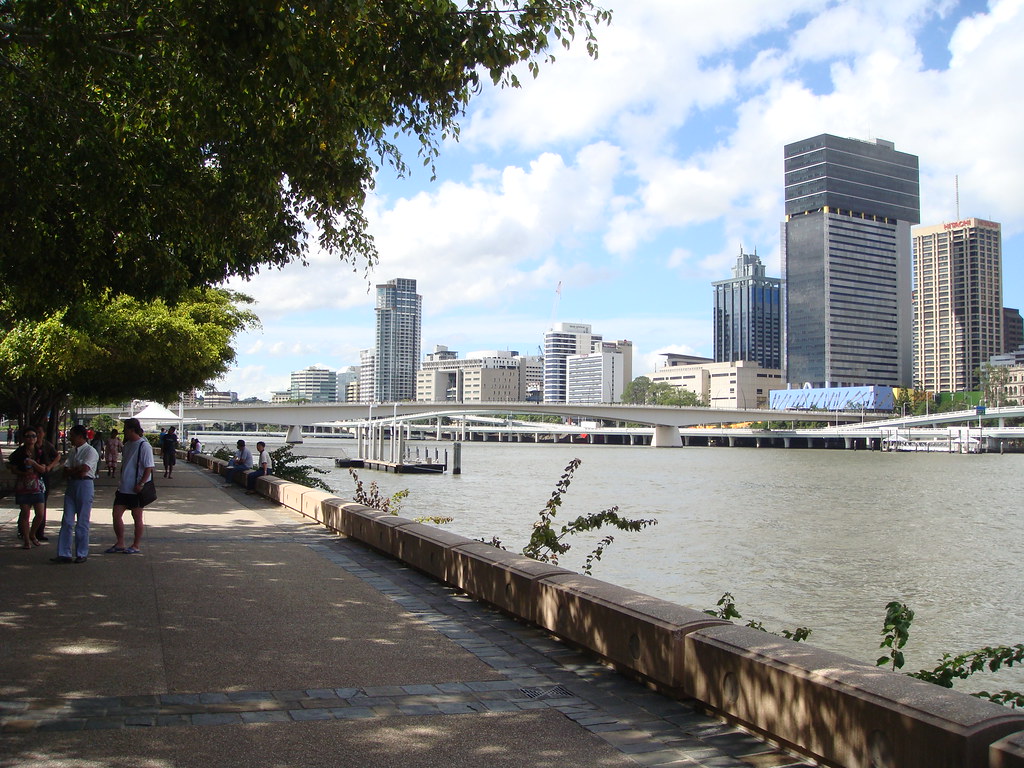
Down the end of my street, was a rather disgusting sugar factory. On the wrong day of the week, I’d come home and find my balcony smothered in thick black dust, not the best for the lungs. Right next to the factory was a derelict power station, full of ghosts, vandals and delinquents. It was no longer cutting edge, but New Farm was still pretty grotty and on the edges of respectability.
Today, the suburb is almost unrecognizable. Everywhere, there are huge apartment blocks. Every old warehouse is now luxury loft accommodation. The old sugar factory is now extremely exclusive, hugely expensive apartments. So exclusive, that the former mayor moved in. Even the power station has had a facelift. It’s now the very salubrious Powerhouse Art and Culture precinct. Not a delinquent in site! They’ve kept the graffiti though, as it’s rather cool. The insides were left untouched, so 20 years of graffiti are there for the world to see. Gone are the prostitutes hanging around in the daytime. In their place are herds of young mothers pushing prams around shopping, eating at cafes and popping into art galleries.
Another major improvement has been the transportation. When I left, Brisbane was all but grid locked every morning and evening. It’s still not the best, but at least it’s still moving. A series of dedicated bus lanes have been built all over the city, making travel by bus quick and easy.
The most popular change though, has been the City Cats. Brisbane sits on a river, rather banally called the Brisbane River. The early settlers weren’t the most imaginative lot. Gliding up and down the river are very impressive, very fast catamaran ferries. They glide from one end of the city to the other. Did I mention they’re fast? Amazingly so. They’re also relatively cheap and give you a great view of the city. They’re so popular, that on weekends, people buy a ticket and stay on board for hours at a time, enjoying the sunshine and the views. OK, so you have to be a bit of a ferry enthusiast to do that, but it is a fun ride.
The most tourist friendly part of Brisbane is the South Bank. Up until the 1980’s, this was the home of some pretty dodgy warehouse, houses of ill repute and basically anything not legal in the city. In a stroke of genius, it was decided to host the world trade expo on the site in 1988 – “World Expo 88”. It was a tremendous success. It was probably the one event that shook Brisbane out of it’s sense of complacency and made people realize that perhaps Brisbane could be a vibrant, modern city, rather than just a “big country town” as it always seemed.
After lying vacant for quite a while after Expo 88, the site was reborn as a mixed used recreation space. Today, it’s covered in trees, shops, picnic areas, restaurants, apartments, offices and everything else you can poke a stick at. It’s a triumph of urban planning and enjoyed enormously by locals and tourists alike.
The best feature of South Bank is the pool. That’s a strange thing to say, but you need to see it. Brisbane is unique in the capital cities of Australia in that it is not on the coast. The city it actually miles and miles inland from the sea. It sits on the first site of fresh water inland from the sea, so that’s where the city was built. This means, there are no beaches, which is a very odd thing for Australia. The solution? Build a fake beach in the middle of the city!
The pool at South Bank is actually a series of artificial lagoons, complete with white sandy beaches, palm trees and life savers. It’s raised above the river, so given the right angle, all you see is the pool then the river behind it, creating a great illusion that you’re on the beach. On a summer’s day, it’s hugely popular, mostly with the locals. It’s also free, which probably has a lot to do with the popularity. People come here for a fun day in the same way that Sydney-siders go to Bondi. It’s not as big, is even more crowded, but it has much less sharks!
Coming back, I must say I’m very impressed with how the city has changed. While it may not have the critical mass of Sydney or Melbourne, it has a lot of vitality. The locals no longer think they’re living in a backwater, mainly because they’re not. A lot of people are migrating here and I can see why – it’s a great place to live!
Does this mean I’ll me moving back to live in Brisbane? Hell no! It may be an up and coming bustling city, but it’s still no London. That, I think, is why people like it so much.
Posted by
nosywombat
at
11:39 PM
0
comments
![]()
Labels: australia, brisbane, feature
DiggIt! Del.icio.usWednesday, November 7, 2007
London – Kensington Gardens
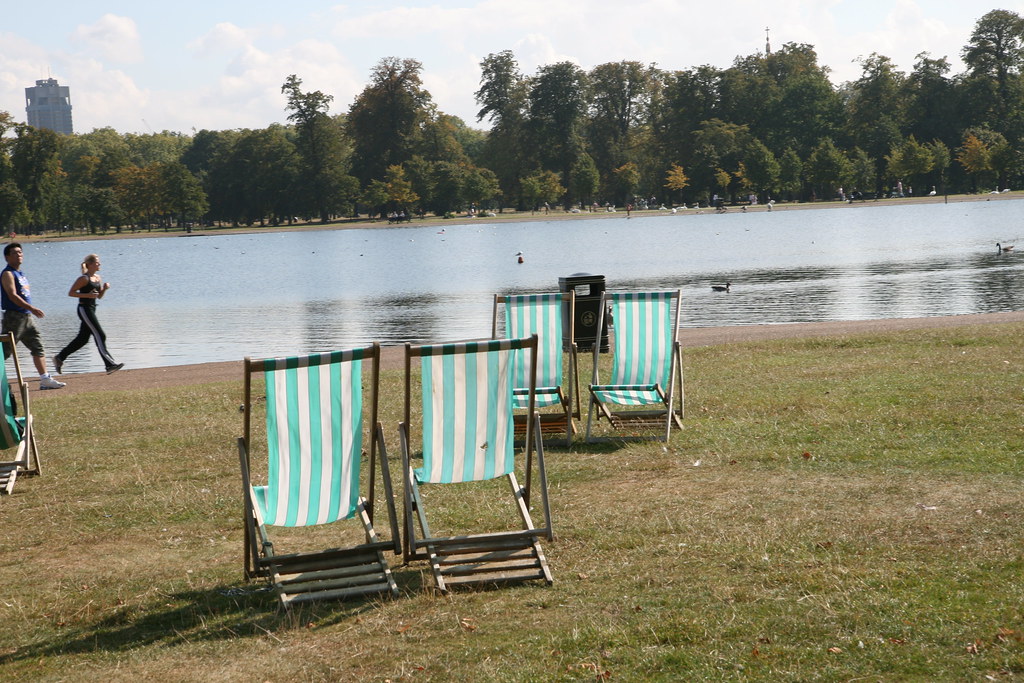
One of the surprising aspects of central London is how green and leafy it is. The centre of the city has a large amount of green space. This has been preserved through time by various historical quirks. The net effect, is that you’re never very far from a very large park, tall trees and lots of grass. One of the best known parks in London is Kensington Gardens. It has trees, gardens, ponds and the occasional Princess here and there.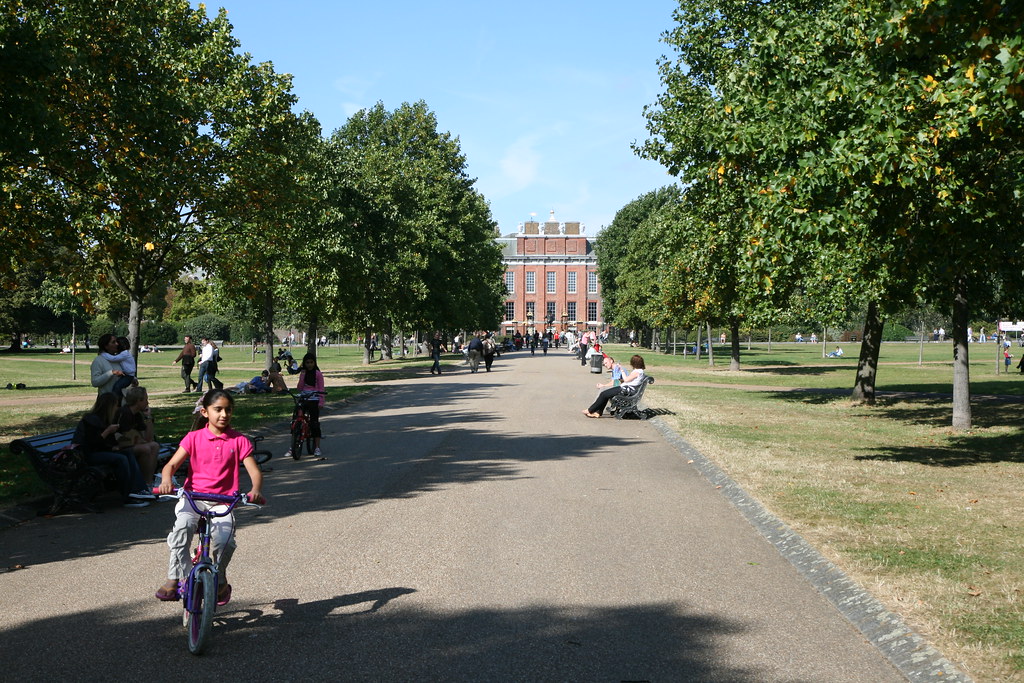
Kensington Gardens is the green bit on the map next to Hyde Park. In reality, it’s just one big park, but technically speaking, the Serpentine is the dividing line between the two. Historically, Hyde Park was royal hunting grounds, whilst Kensington Gardens was the private garden of Kensington Palace.
Today, Kensington Gardens is a rather lovely green open space. There’s some truly huge trees growing here and the grass is kept nicely trimmed. Roughly in the middle, is the Round Pond. This was once the centre of a very formal garden, but today, it serves as a private pool for the swan and geese that flock around the edges. On summer days, enthusiasts race remote controlled sailing ships around the water.
Perhaps the best thing about the park is the sense of isolation. Sitting under a tree in the middle of the garden, all you can see is other trees, grass and herds of tourists. The fact that you’re in the biggest city in Europe is neatly obscured by all the foliage. It’s a truly relaxing get away from the buzz of the city.
Apart from the greenery, the park is also packed full of critters. The most obvious and cutest are the squirrels. The squirrel that runs around the park in great numbers is the Grey Squirrel. It was introduced from North America and promptly all but wiped out the indigenous Red Squirrel. Conservationists are appalled by this, but everyone else doesn’t really care- squirrels are so damn cute!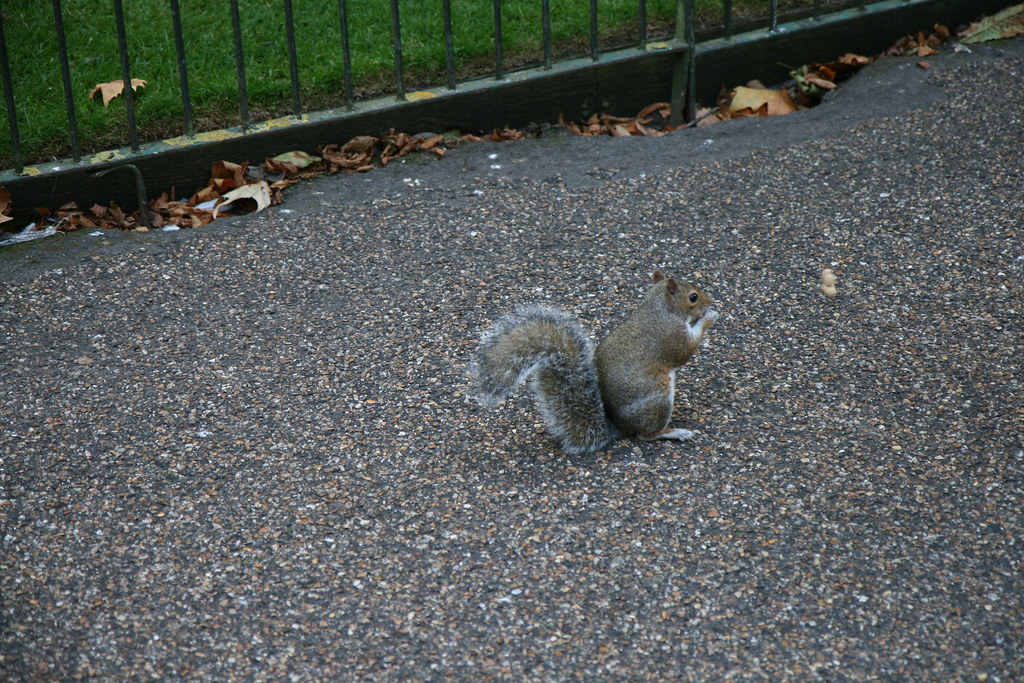
I challenge anyone of any age to come to the park with a bag of peanuts and not leave with a smile on their face and a giggle on their lips. The squirrels are just so cute. They’re pretty tame too, so if you kneel down and hold your nut out, the squirrels will come right up to your hand, grab the nut and run away. So goddam cute! Growing up in a squirrel-less country, I’m still obsessed by these little critters. Sure, they’re nothing but rats with fluffy tails, but they’re so cute as they jiggle about running away with a nut.
Unfortunately, the squirrels know they are cute and can push it a bit far some times. If you venture into the area of the park I call “Squirrel Mountain”, make sure you come equipped with a large bag of nuts. If you don’t follow the rules and dutifully extend your hand with a tasty nut, the squirrels will come looking. I’ve seen them scamper up the legs of nut-less tourists looking for a snack. Sure, they’re cute, but as soon as they start climbing up your leg, all you can think about is rabies! Be safe, travel with nuts at all time in Squirrel Mountain. I won’t tell you which part of the park is Squirrel Mountain, that would be cheating.
Apart from the squirrels (they’re so cute), there’s also a bunch of birds to be found in the park. The pond has its usual colony of ducks, geese and swans, but around the edges there’s a lot more. Of course there are pigeons, but the starlings are nearly as fun as squirrels (but not as cute) and the crows can be quite mischievous as well. Best of all, in some parts of the park, if you stick your arm out with some bread on it and wait long enough, robins will fly down from the branches and snatch the food from your hand. That’s a pretty amazing thing to do in the centre of the city!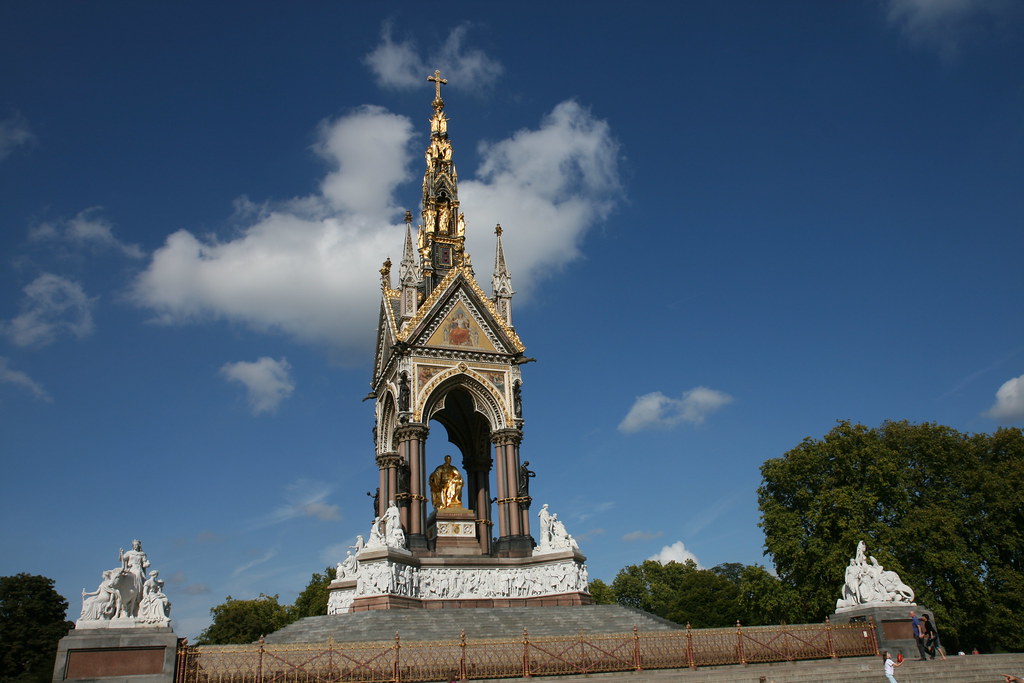
Apart from the natural features of the park, there are a number of interesting buildings in the gardens. Grandest of all is the Albert Memorial. This was erected by the grieving nation upon the death of Prince Albert, the wife of Queen Victoria. It’s a gargantuan monument right in front of the Royal Albert Hall. It’s very grandiose, but perhaps fitting for a man who had such a huge influence on the country.
There’s also a few smaller monuments dotted about the park. There’s a band stand, a fairy tree, as well as a rather large childrens’ playground. It’s so popular in summer, that people actually queue to get in. At one stage, the locals tried to ban visitor’s children from using it, but luckily that was defeated – bloody snobs.
The most obvious feature of Kensington Gardens is obviously Kensington Palace. This is the former home of Princess Diana after her divorce from Prince Charles. It was also the home of the Queen’s sister, Princess Margaret. Presently, it houses a whole gaggle of C list royals not posh enough to have their own palace. I’ll write more about it in a separate entry.
Kensington Gardens is one of the true wonders of London. It’s huge, it’s green and it’s full to the gills of interesting stuff to look at. Best of all, it’s free!
Posted by
nosywombat
at
12:17 AM
1 comments
![]()
Labels: attraction, europe, london, uk
DiggIt! Del.icio.usSunday, November 4, 2007
London – Battersea Fireworks

In 1605, a plot was executed to blow up the British Parliament at Westminster. In charge of the plot was a fellow called Guy Fawkes. The plot failed, everyone involved was hanged and business carried on as normal. In commemoration of this event, fireworks celebrations are held every year around November 5, which was the day of the plot’s failed execution. One of the most popular events in London is held at Battersea Park, on the southern bank of the Thames River. I went along for a look sea.
During the day, Battersea Park is a fairly quiet green, leafy park, sitting right by the river. It’s full of joggers, kids running about and general park related fun. On the night of Guy Fawkes fireworks, however, it goes a bit mental. The Council which runs the event estimates about 55,000 people turn up to see the fireworks. Charging five pounds to get into the park, it’s a bit of a money spinner for the council.
Inside, there were all sorts of tasty looking stalls selling food, mulled wine, ice cream, hot dogs and other usual fairground type food. But since there were 55,000 other people about, the queues were rather humongous. The park opens at 6 and the fireworks start at 8, so I think a lot of people spent this entire time in the ice cream queue – it was huge! The only queue longer was the toiler queue!
At 7:30pm, the bonfire was lit. This is the more traditional part of the celebration. In most towns around England, a massive bonfire is constructed in the days leading up to the event. I’ve seen some rather humongous ones over the years. This one, was more of a token effort. Big bonfires tend to burn through the night and half way through the next day. This one looked like it was designed to burn for a few hours and nothing more.
Traditionally, effigies of Guy Fawkes are burnt on top of the pyre, along with a few devils etc. This wasn’t the case here. In the days of politically correct fun, burning effigies of the devil and Catholics at the same time is a bit of a no no. Instead, it was just a whole lot of wood. It’s a shame really. Watching the effigies burn is the most fun. Oh well.
Up until a few years ago, fireworks were available for sale in shops all over the UK. This meant that for two or three weeks before Guy Fawkes night, every neighbourhood would be subjected to random explosions every night as people let off their own fireworks. This seems to mostly happen at 2am when people were sufficiently drunk and reckless to light the fuse. These days, however, fireworks sales are now banned. People seem to still be able to get them, but in much reduced quantities.
At just past 8pm, the proper fireworks began. I have to admit, that they were quite good. I’m not much of a fireworks fan, but these were done very well. They were also set to music. The explosions were timed with key moments in the song, which was good.
As is usual with fireworks displays, it was all over before you knew it and then there was a mad dash out of the park. After all, there’s no point hanging around in a dark park with 55,000 other strangers!
I must admit to liking the fireworks display more than I was expecting. It’s good to see such an old tradition carried on through the years, but a bit of a shame that the meaning behind the event is being lost. Mind you, the meaning is basically “death to all Catholics”, so perhaps that’s not such a loss.
Posted by
nosywombat
at
11:42 AM
0
comments
![]()
Labels: culture, europe, event, london, uk
DiggIt! Del.icio.usSunday, October 28, 2007
London – Shepherd’s Bush Market
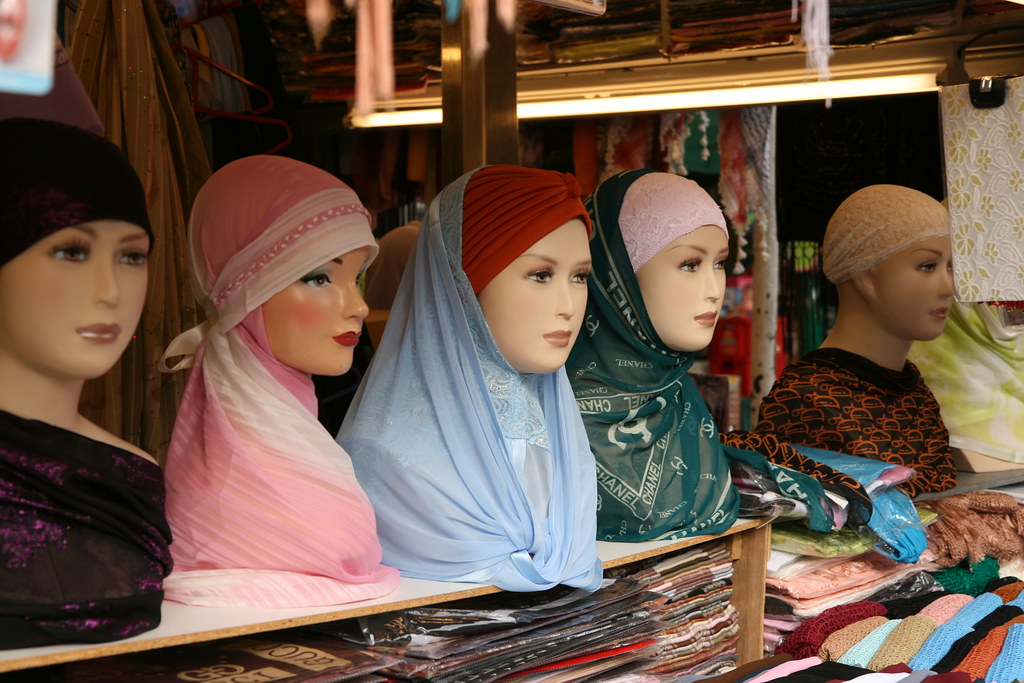
London is well served by a number of unique markets throughout the city. The best known are Portobello Road market and Camden market. Step a little away from the well touristed areas of London, however, and you will find a huge number of other markets operating throughout the city. The nearest market to me is the Shepherd’s Bush market.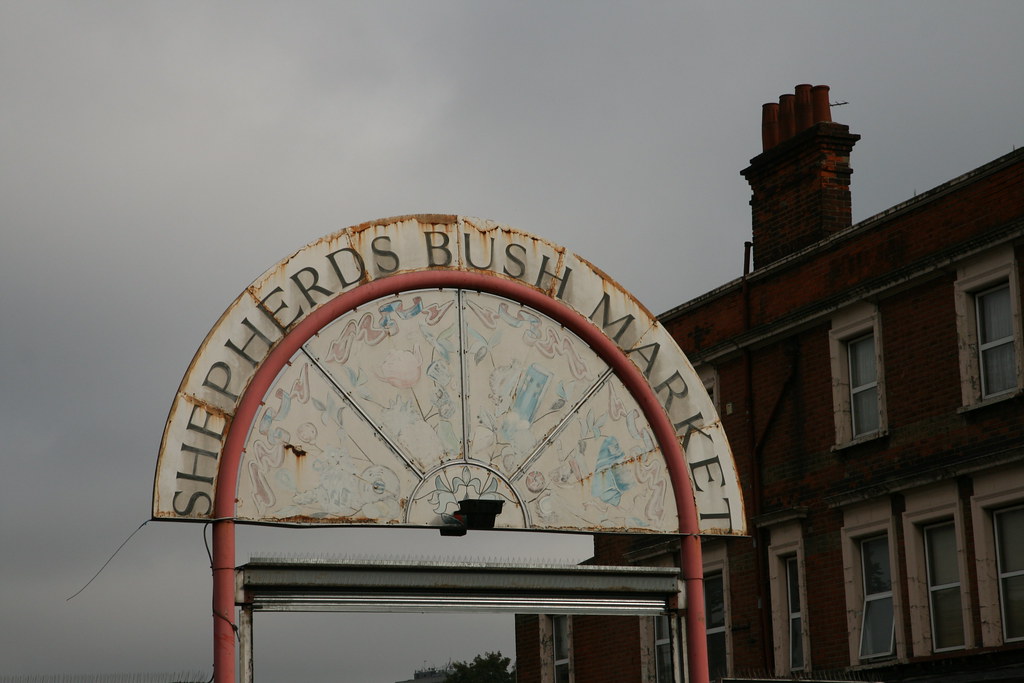
This market exists due to a bit of freak civil engineering. Cutting through the suburb of Shepherd’s Bush is the Hammersmith and City tube line. Either side of the train line is pretty much uninhabitable. Sitting in the gap between Goldhawk Road and Shepherd’s Bush stations is this market. It sits against the train viaduct. It’s a great use of the space and turns what would be another dead part of town into a vibrant community centre.
The market covers a very diverse mix of goods. At the start, there’s the usual fruit and veg stalls. Usually fresh and usually pretty good value. There’s also a few fish mongers, Halal butchers and other produce suppliers.
There’s also some pretty funky clothing shops. These cater to the local muslim population. There are shops selling the latest fashions in women’s head coverings, as well as variously brightly coloured sari shops. This is a taste of the middle east in the middle of London.
I can’t say that I’d make a trip out of my way to go this market, but it’s an interesting diversion on the way through this part of town. There’s a similar market in Church Street Paddington. They’re local affairs, which is a great way to see how people in London live, removed from the tourist hype that surrounds some of the better known markets.
Posted by
nosywombat
at
11:13 PM
0
comments
![]()
Labels: attraction, europe, london, uk
DiggIt! Del.icio.usSaturday, October 27, 2007
London – Portobello Road Market Notting Hill

Julia Roberts has a lot to answer for. In the sixties, Notting Hill has a reputation for being a centre of racial conflict, riots and general bad vibes. After her winsome smile captivated the world in the movie “Notting Hill”, the suburb in western London has become a hot spot. It’s undergone a massive housing boom, a huge influx of the upwardly mobile and a general exodus of the people who made the suburb what it was. Good or bad, it’s a different place now. At the centre of the suburb, sits the Portobello Road Market.
During the week, Portobello Road is a fairly sedate place. It’s full of funky boutiques, lots of antique shops and a few locals mixing with the odd tourists. There are street stalls selling fresh fruit and vegetables, along with the occasion street food vendor. Come Saturday morning, however this changes. Saturday morning is home of the “proper” Portobello Road market.
This is the market that attracts the swarms of American, Spanish and Italian tourists. For many, Portobello Road market is the quintessential London market. The street is lined with stall holders selling all manner of weird stuff. The road has a reputation as being a great place to buy authentic English antiques. Sure, there’s lots of stalls selling real Royal Doulton and real silver items, but there’s an equal number of stalls selling faux antiques. This is what he tourists seem to really love. Where else in the world would you go to buy a magnifying glass with a handle made from a deer antler? These seem to be pretty popular by the crows gathered around.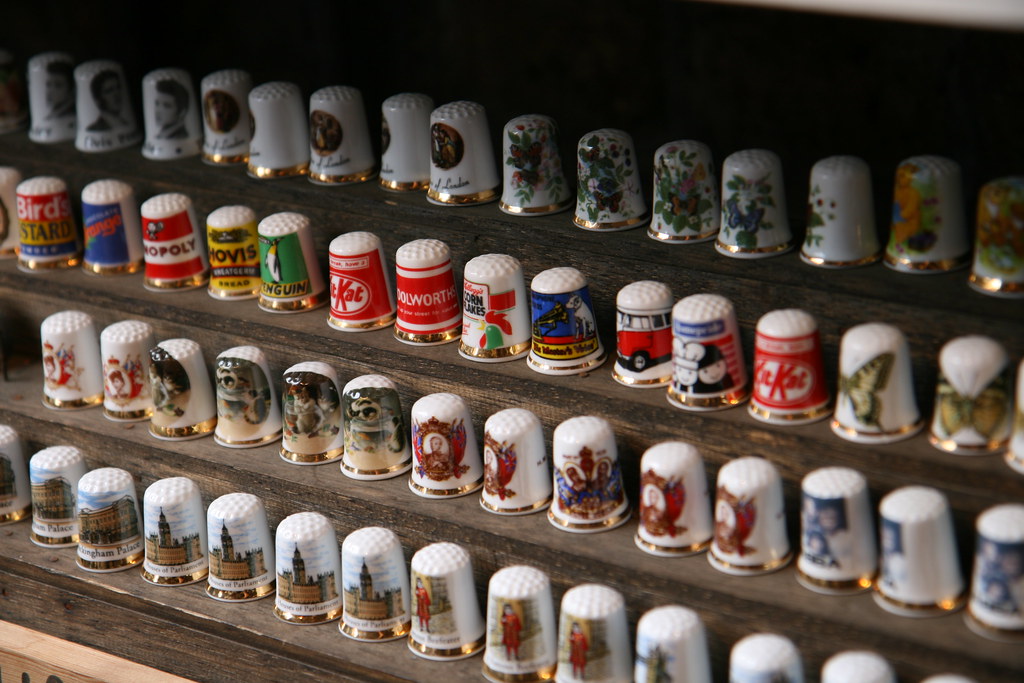
On one side of the street market, is a labyrinth of small shops. These are the stalls that are here during the week. They house the proper antique merchants. During the weekend, however, they’re mainly empty. The tourists don’t want a real antique plate for two hundred quid. They want the 1982 plate featuring Princess Diana for a tenner.
If the crowds don’t deter you, by the time you get to the bottom of the hill, you come across the more bohemian section of the market. Here, the faux antique goods are replaced by the food vendors. Some of these are pretty amazing. All manner of delicious smelling foods are for sale here. There’s any number of delicious baked good stalls, as well as a lot of the traditional fruit and veg stalls. Best of all, however, are the hot food vendors. They sell amazing paella, sausages, steaks and various hot yummy dishes. For me, this is the reason to come to Portobello Road market – some relatively cheap, hot, delicious food.
Just one street over from Portobello Road market is the much more sedate, much more higher class Westbourne Terrace. This street is lined with very fancy fashion shops, jewellery stores and the odd candle shop. It does not get nearly the same amount of traffic as the nearby market, but it’s still worth a visit to look into the gorgeous windows of the posh shops.
As a tourist destination, Portobello Road lives up to its reputation. It’s a fun place to check out some local products, have a bite to eat and people watch. Just watch out for the crowds. 11am on a Saturday morning is absolutely manic. That’s kind of the point though. Go too early or too late and you miss the vibe. IT also gives you a chance to look out for Hugh Grant. I’m sure he’s around there somewhere...
Posted by
nosywombat
at
1:27 PM
0
comments
![]()
Labels: attraction, england, europe, london, uk
DiggIt! Del.icio.usLondon – Random Drives in the Country
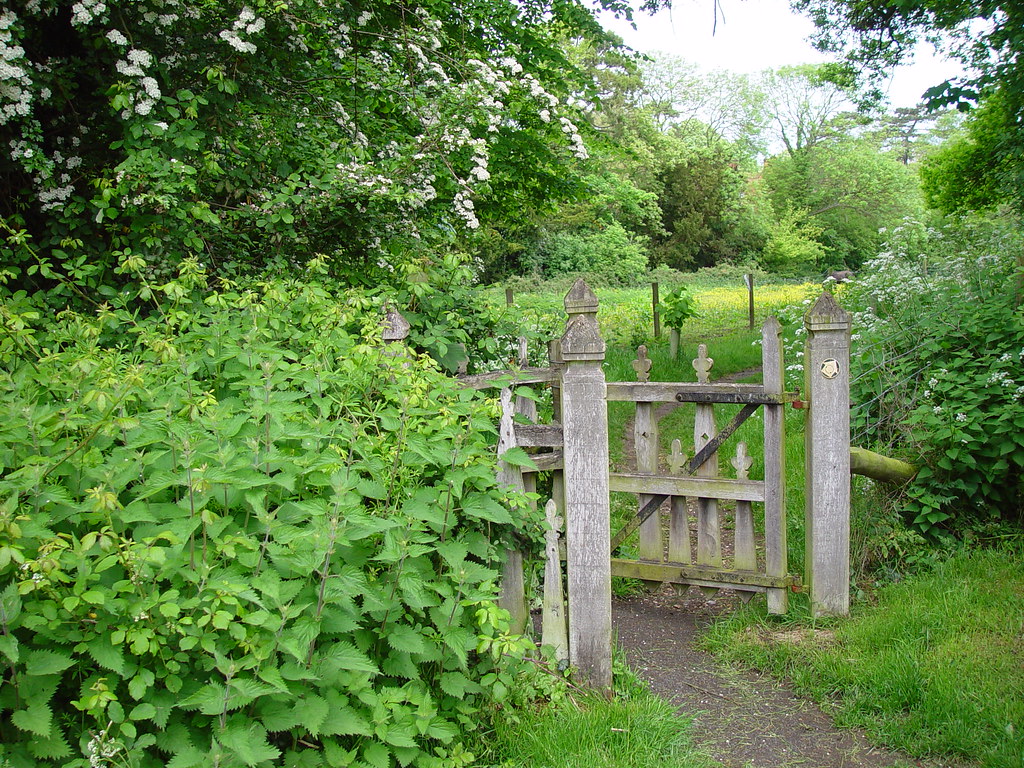
Thrusting through the English countryside is an extensive network of motorways. They’re world class roads that connect the major urban centres of the country. Although they are frequently clogged with traffic, they’re the most efficient way to drive around. Take a small detour from the motorways, however, and you arrive unannounced into a totally different world – the world of the small English village and the small winding road. This is the sylvan world of England much celebrated by the poets.
Driving home from Bracknell everyday was a bit monotonous. There’s a perfectly good motorway, the M4, that goes basically from outside my office in Bracknell to outside my house in London. Direct, straight and rather boring. Inspired by buying a new GPS, I decided one day to random drive off into the countryside and see what there was to see.
I was very pleasantly surprised. Bracknell itself is a bit frumpy, but the villages surrounding it are amazingly beautiful. They crammed with centuries old town houses, the occasional manor houses and a lot of forests. Trees everywhere as far as you can see.
Parked outside the houses were usually very expensive cars. Well, usually a couple of expensive cars. The countryside is no longer a place for country folk. The Thames valley west of London is the reserve of the posh city commuter. They spent an hour or two every day on the train into London in order to work at the daily grind that allows them to live in the country. They then work so hard to afford their country house, that they never spend much time in it.
This was a paradox I never understood. I’m generally a lazy fellow, so the thought of a two hour commute each direction every day just seemed ridiculous. After driving through these villages, however, I started to get a feel why people do it. The houses are ridiculously pretty. The villages are immaculately kept, well preserved and seem to have been grown from the soil, not built to dominate it like modern towns. Add in a family, a dog, two cats and a large garden and I can see the attraction.
Apart from the beautiful houses and villages, the other fun part of the journey was the randomness of it all. With GPS firmly stuck to the wind screen, I was able to drive down whatever little road took my fancy. Even though the GPS was beeping out imperatives to turn left, turn right or even turn around, it was fun to just drive down whatever lane looked interesting. Due to the affluence of the area, every road, no matter how small, was paved and well maintained, so there was no fear of accidentally going off road. It was great fun!
At the end of my little jaunt, I started taking notice of the GPS. After a brief trip down the car park of Legoland, I was back on the motorway zooming home. Sure, I was a little late home that day, but it was a great way to break the monotony of the commute. It also gave me a small peek into the world of the rural commuter. I don’t think it’s the life for me, but come back in twenty years time. Things may change...
London – Outside the M25
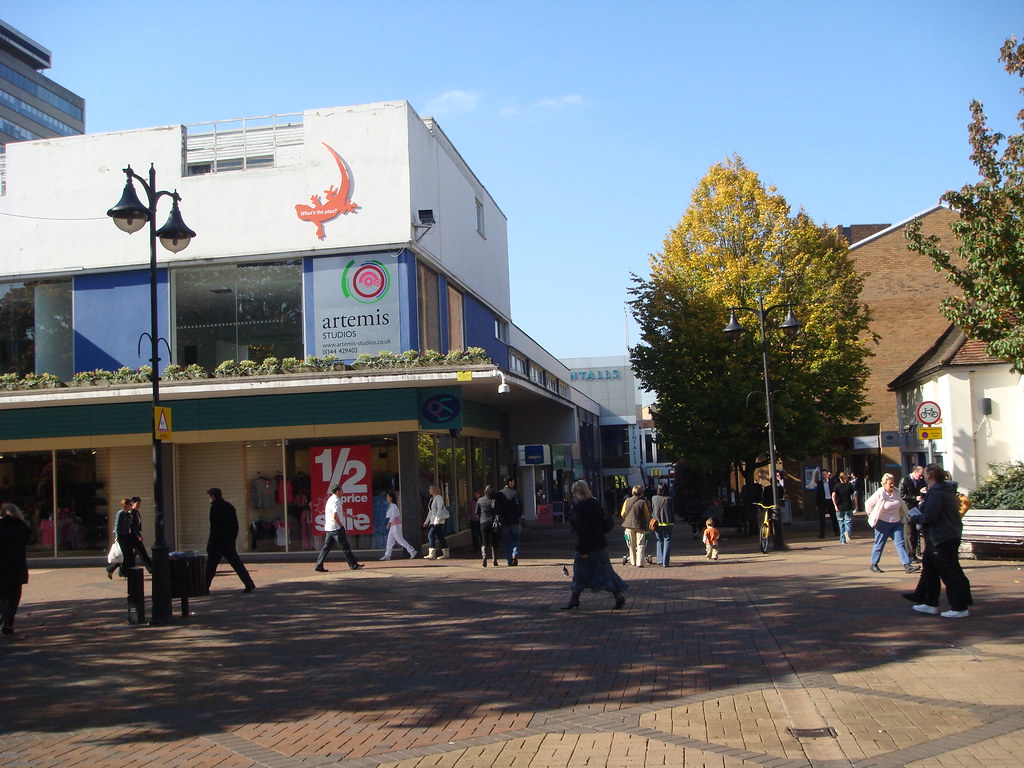
London is an amazing city. It’s the largest city in Europe and prides itself in having one of the most diverse mixes of people in the world. It’s a centre for finance, fashion, shopping and entertainment. As Samuel Johnson put it “when a man is tired of London, he is tired of life”. Step outside the limits of London, however, and you come into a completely different world. Beyond the ring road of the M25 is a completely different world. A world less diverse, less interesting and slightly scary. A world called England.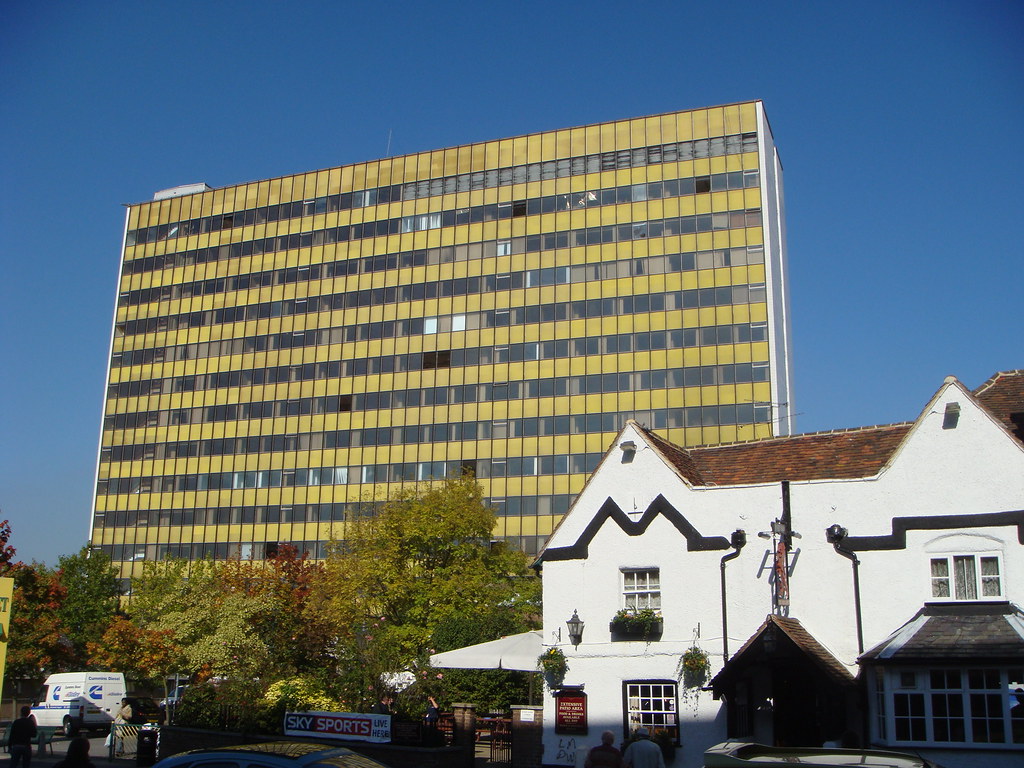
The fist job I had on my return to London was in a town on the outskirts of London called Bracknell. This involved a long drive there and back each day. After living next to my office for the past 18 months, it was hard work!
Bracknell is an ancient medieval town, but after the second world war, it was designated by the government as a “new town”. This removed control of the town from the local council and placed it under direct government control. The aim was to promote growth, new housing and generally to get things moving. The affect has been rather different.
Rather than enhancing the feeling of the medieval town, the whole thing was just knocked to the ground and replaced by better, new buildings. The net result is a rather grey barren metropolis wannabe in the middle of the countryside.
Dotted around town, are a few buildings saved from the wrecking ball. There’s a delightful seventeenth century inn, as well as a few other old world pubs around town. Dominating the whole town, however, is a rather vile looking green high rise. It hasn’t been occupied for years and the vandals have broken in. The building is now pocked with broken windows, smoke stains and a general feeling of urban decay. Not the best thing to see in the middle of the countryside.
The town centre also suffers from decay as well. There’s a not too bad mall, as well as a nice little shopping area, but walk two minutes in the other direction and you stumble across the unfashionable part of town. The main part has regular high street shops – HMV, Boots etc. This part of town, is dominated by charity shops, bargain discount shops and very suspicious shops that aren’t quite clear what they sell. It’s all a bit scary.
Then there’s the people. I’m sure they’re all lovely, but coming from a year or so in Asia and living in London, they all seem very homogenous and more than a little scary. There’s the ubiquitous teenage mother, the scary old booze addled man, as well as an above average number of large, circular housewives with a fag hanging out their mouths. It’s the world of “The Royle Family” transposed to southern England. Everyone seems just a little too well fed, a little puffy and a little lacking in direction, focus or drive. In other words, contented middle England.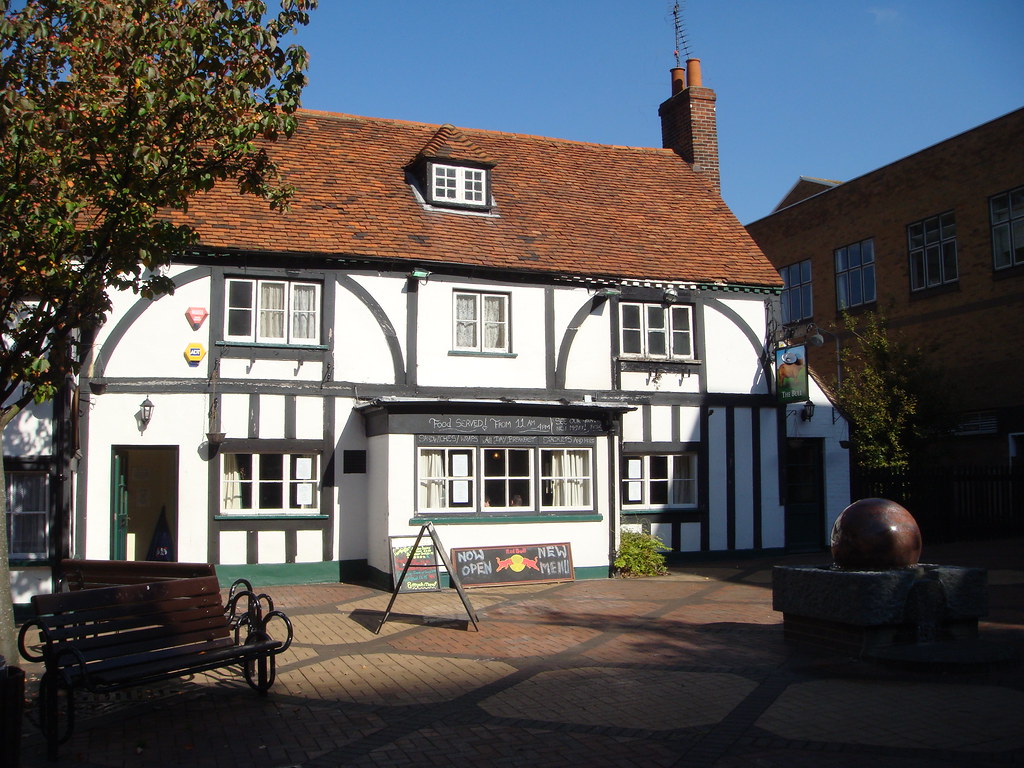
Not that I’m saying Bracknell is a bad place. If this was a place you lived, I’m sure you’d find it perfectly lovely. It has all the shops and amenities that you could want. I’m sure the housing is reasonable and everyone has a good standard of living. Best of all, London is only an hour away by train.
For me, that’s the key point. London is not in any way a part of England. It proudly proclaims itself the independent Republic of London. A trip into the countryside is a trip into another country. England is a nice place to visit, but I much prefer my home country of London.
Posted by
nosywombat
at
12:14 PM
0
comments
![]()
Labels: england, feature, london, uk
DiggIt! Del.icio.usMonday, October 22, 2007
Brace Yourself...
It's been a while since I've added a new post to the blog. I'm now safely back home in London after my big adventure in Asia and Latin America. Don't despair though, some new posts are on their way. Watch this space...
More>>>Wednesday, July 25, 2007
London - National Rail
I have now officially returned to London after nearly two years away in Asia. It's great to be back. Seeing exciting new places is loads of fun, but it's good to finally be home. I'm also back at work at a new job. The fun part of the job is getting to work. I've been trying out the National Rail system. It's much hated by everyone, but I kind of enjoyed it.
I"m working in an industrial park about an hour's drive west of home. It's not exactly the sticks, but it's not a big metropolis either. For the first week, I drove to work, as it's a pretty direct route. It was OK going to work, but getting home was a nightmare. There's nothing more annoying than sitting on a motorway going 20km/h! Action was called for - I was going to get the train to work!
Due to a planning decision by the Victorians, all the train stations in London are located around the periphery of the city. I'm talking about the Queen Victoria Victorians here, not people from Melbourne. I think this was done so that it didn't affect the business of the horse drawn carriages. Anyway, it means that my nearest station, Paddington, is a tube ride away. That's right, before I can even get on a train, I had to get on the Underground!
Arriving at Paddington, the scene is a bit mental. There are thousands of people in a mad panic to be somewhere. There was no-one wandering idly about, except for me. Everyone was on a mission and had a well practiced routine for how to get in and ot of the station in as short a time as possible. I felt a bit like a country bumpkin wandering about looking for a ticket machine. I remembered not to drool when looking at the big iron horses! :-)
Once I'd bought a ticket, worked out where to go to get it, my train promptly departed. I literally missed the train by about a minute. D'Oh! Not a good way to start the trip, but it gave me a chance to wander about the station.
I've always thought Paddington station was a rather nice building. It was one of the first railway stations in the world and is made from a rather grand cast iron framework, much like the ribs of some great beached whale. It's always busy and always full of people.
It was also at this station, where Paddington Bear was so cruelly abandoned. There's a statue of the bear in the main concourse. People usually sit on it or use it as a convenient place to put their rubbish. Poor Paddington!
I finally got on my train and away we went. The train was a semi express service, so it went at an impressively fast speed out of the station. Within a few minutes, we were out of London and into the countryside. It's summer at the moment, so the countryside was amazingly lush. There were big bushy trees everywhere, as well as a lot of wheat fields whooshing past. It reminded me why I like the English countryside so much - it's just so pleasant! Sure, the nicest parts of England are never by train tracks, but it was rather nice seeing nature on the way to work.
I finally arrived at my station after about an hour. It was a very relaxing experience. Once I was aboard, I sat by my window and looked out at the scenery. Most of the commuters are going in the opposite direction, so it was very quiet on the train - an almost perfect commute!
The trains themselves have a few interesting features. Geek wise, they have wireless internet! I must try that out one day. I'm sure it's massively expensive, but how cool! The other fun feature is the doors. On the older trains, the doors only have one handle and it's on the outside of the train. To get off the train, you have to open the window, stick your head out and grab the handle. Whoever thought that was a good idea really needs to be shot!
A lot of people complain about the national rail system as being old, inefficient and generally crap. As a one off experience going to the opposite direction to most people, I found it quite pleasant. It actually inspired me to do some rail trips. My train went all the way to Cardiff. I was sorely tempted to skip work that day and go off to Wales. Next week maybe...
Posted by
nosywombat
at
9:24 PM
1 comments
![]()
Labels: attraction, culture, feature, london, uk
DiggIt! Del.icio.usSunday, July 15, 2007
#53 - Cuba
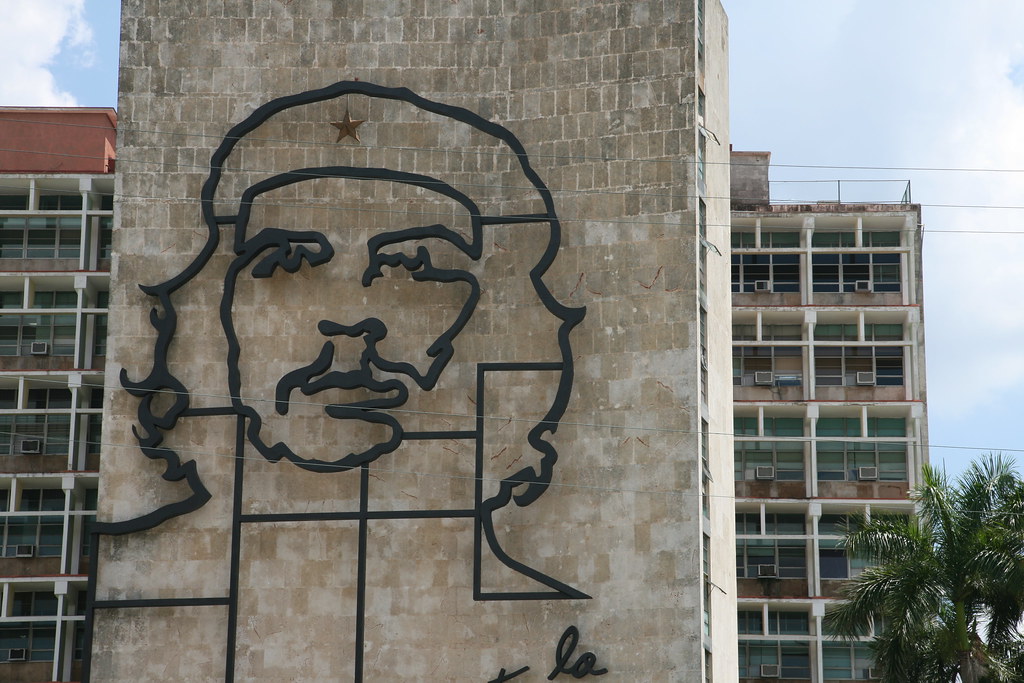
Everything about Cuba is a little unusual. The history of the island is just amazing, as it the continued resilience of the revolution. The question that comes to mind immediately, is how long can things go on like this and when will it finally turn into a “normal” country?
It would be easy to label Cuba as just another odd ball failed communist state. It has all the trappings, from the monumental architecture to the slogans promoting the state all over the country. On the other hand, there are so many features that are much more like a regular country.
A handy test of how messed up a country is can be found by looking at the money. If the country is a dictatorship, the dictator will usually be on the money. If the country is dirt poor, the money will be worn, grotty and all notes. None of these tests apply in Cuba. Fidel is nowhere to be seen on the money and all the notes I came across were crisp and clean. This compares to Myanmar where the notes closely resembled used toilet paper. Indeed, the only odd thing about the Cuban money was the presence of a three dollar note! That’s just weird.
I was also surprised at the ethnic diversity of the people. I was expecting it to be like Mexico, where all the people are some mix of indigenous people and the white colonisers. Not in Cuba. For a start, there’s a lot of black people, due to the slave based sugar industry. What surprised me though, was the huge number of white people. This makes perfect sense given the history of the place, but it came as a bit of a surprise. It’s a testament to the government that all these groups seem to live together in such harmony.
The government also has a good record on providing free healthcare, free education and various other initiatives. Indeed, the Cuban medical system is so advanced for the region, that using Venezuelan petrodollars, the Cubans are now providing help to poor people from other countries in the region.
Despite all the positive aspects of the revolution, there’s no getting away from how dirt poor the people of the country are. The houses of Havana are all falling to bits, as are the cars they drive around. There are few shops and what’s in them is pretty poor. It’s all a bit depressing.
I’m glad I went to Cuba, but I don’t know that I’m in a hurry to ever go back. Everyone says to go see Cuba before Fidel dies. Well, I’ve done that now. Let’s hope that if I go back in ten years time that things will be much improved.
Saturday, July 14, 2007
Distortions in space-time - Funny time zones
When you arrive in a new city, the first thing to do is work out what time it is. But have you ever wondered about how this time is worked out? Have you ever noticed that some of the times are just weird? Let me explain...
The whole idea of a time zone came about during the expansion of the railroads in England. Prior to this, noon was always the local time when the sun was at its highest. No-one cared what time it was anywhere else, just local time. After all, with no phones or planes, who cares! The problems started when the railroad companies started issuing timetables. If a train was to leave at noon, was that noon in London or noon in Edinburgh?
A decision was made to affix time based upon the Greenwich observatory in London. All time would then be based upon the time in London. For the first time, every clock in London could be set to the same time. But what about the rest of the world?
To work out the relative time in a place, you just need to know the longitude of your location. Working out longitude is pretty complicated. There’s a lot of books about this. Read them. They’re fun. Anyway, once you know your longitude, you know your time.
The world spins once in 24 hours. The longitude system has 360 degrees. Using a bit of mathematics, you come up with the equation that every 15 degrees of longitude means a one hour difference in time. Sounds, easy right? Mathematically, it is, but then politics get involved.
Not everyone is happy with this simple equation. The idea is, that every 15 degrees, you add another hour. In Australia though, this didn’t quite work out. Adelaide is 7.5 hours ahead of GMT, whilst Melbourne is 8. Why the half hour? The idea was that Adelaide was so close to Melbourne, that a one hour difference was too much, so half an hour difference would be better. Plain stupid if you ask me!
Things get weirder in Asia. The country of Malaysia covers a wide range of longitudes. It has the bit on the Malay peninsula, but it also has the bits near Brunei on the island of Borneo. For some odd reason, it was decided to have one time zone for the entire country. Which time zone to use? Based on the longitude, Kuala Lumpur should be GMT+7 and the Borneo bits should be GMT+8. For some reason, GMT+8 was chosen. Singapore followed suit.
Just next door in Indonesia, however, things are a bit more sensible. It has three time zones, correctly following the longitude breakdown. This has odd consequences if you’re travelling from Singapore to Indonesia. If you catch a boat and take a 45 minute trip to Bintan, then you have to put your watch BACK an hour. If you jump on a plane and fly for two hours to Bali, you find yourself in the same time zone! That’s just weird.
It gets worse. India for reasons best known to themselves, have adopted a time zone of GMT+5.5 Why the half? I think it might be curry related! Next door, Myanmar followed suit and set a time zone of GMT+6.5. Weirdness begets weirdness. Just when you thought it couldn’t get worse, Nepal has a time zone of GMT+5.45. Now there’s no way you can justify that as being sensible!
All this fiddling with time zones was a bit much for the Chinese. They decided to have one time zone, GMT+8 for the ENTIRE country! It’s a massive place. Based on longitude, it should have five time zones! As the sun rises at 7am in Beijing, in Xinjiang it’s also 7am, but the sun won’t come up for another three hours. How annoying must that be!
Just to make things fun, we can throw Daylight Saving into the mix. Daylight Saving is a good thing. The only problem is when it’s not consistently applied. In Australia, out of the seven states and territories, two of them don’t have Daylight Saving and one starts a month before the others. The end result is chaos. Tasmania and South Australia, I’m looking at you!
If you want to be a real geek, and who doesn’t, you can work out exactly when the sun is at its maximum point overhead. Every degree of longitude is four minutes time difference. If you live in Brisbane, the GMT+10 time zone is based on a longitude of 150°E, but Brisbane has a longitude of 154°E. This means, the sun is highest at not noon, but 16 minutes earlier – 11:44am. If that gets you excited, please seek professional help.
So there you have it. All you could ever want to know, and more, about time zones. Don’t you just feel so much more cleverer now?
Friday, July 13, 2007
Which Guide Book to Buy?
You know where to go, you’ve read www.nosywombat.com, but where do you go to get the rest of the details? Unless you’re a local or know a local, most likely, you’re going to pop into your nearest bookshop and buy a guide book for your destination. But which guide book should you buy? Here’s my tips.
The market leader for guidebooks is undoubtedly “Lonely Planet”. These books started out as a guide to Asia from the Australian husband and wife team Tony and Maureen Wheeler. Since then, they’ve expanded to take over the world. The target market for Lonely Planet is the diehard backpacker. Think greasy hippy with dreds and questionable body odour. If you’re not this sort of person, then you may have problems.
I’ve had a love hate relationship with the Lonely Planet guide books for a few years now. My problem, is that they often cater to the budget minded tourist to the exclusion of everyone else. In some third world countries, getting to a tourist attraction is explained is great detail. You catch this bus, from this station and get off at this stop. All well and good if you’re a struggling back packer, but if you’ve got a few more quid in your pocket, you’re out of luck. It doesn’t tell you that a taxi to the attraction cost five quid and saves you three hours of hassle.
The details in the books can be a bit ropey. In times gone by, Lonely Planet had a reputation for producing maps with glaring errors on them. While this has been cleared up, it still pays to have another source to double check the details.
Another problem I often have is the writing in some of the books. It can be confusing, badly laid out and sometimes just annoying. I’ve just come back from a trip to Havana. I would gladly strangle the author of that book. The section on Havana is really no use when you’re in the field. The content of the guide is writing as a bit of a ambling story, not a concise set of details. It drove me up the wall and I dreaded having to refer to it. Luckily, most of their guide books get to the point. I think Havana was just a bad example.
Another favourite of mine is the “DK Eyewitness Travel” series. These are the books with the white spine. The reason I like these, is that they are jammed full of photos and illustrations. I find just flicking through these books will inspire you to actually go to a destination. It is true that a picture is worth a thousand words. If you’re not sure what there is to see at a destination, then these books are perfect. A quick flick through and you’ve got the outline for your itinerary.
They usually have a lot of maps and lots of lovely details on areas and buildings. Every page is in colour, so the maps are a lot, lot easier to read than the Lonely Planet equivalent. The prose is also a lot less flowery and concise, which is the whole point of a guidebook.
The trade off for a glossy finish though, is the detail. On a page for page basis, the Lonely Planet books have a LOT more information, history and details than the DK books. In some cases, this really isn’t an issue. You know what you want to see and you’re getting a taxi there. Often, when I’m going to a new destination, I get both books! I use the DK book for planning what I want to see and the Lonely Planet book once I’m on the ground.
Another good series of books to check out is the “Footprint” series. The emphasis of these books is to convey a sense of place in a concise manner. The descriptions of all the destinations give you enough history and detail to give you a flavour before you arrive. The level of detail in the books is also really good.
The market for Footprint books is more upmarket that Lonely Planet. The target audience is either families or yuppies. They tell you the cheap way, but they also tell you the comfortable way.
The disadvantage of the Footprint books, is that there are not many of them. They only cover certain destinations and their updates are not as frequent as other books.
There are a lot of other guide books out there on the market. For a weekend getaway, a slim book that covers just one city can be much more useful that a big fat back breaking guide to the entire country or continent. My theory is that the thickness of the book should be proportional to the time you’re spending there. Off for a month, get the fat book. Only a weekend, get the skinny one.
A trap I often fall into, is buying the guide book AFTER I’ve booked my trip. Doing it the other way around makes a lot more sense. The trickiest part of booking any trip is to get the right hotel. You need one that is close to the action and close to where you want to be spending your time. Don’t trust the maps on hotel websites either. It’s their job to make the hotel seem closer to the good bits. With a guide book, you know exactly where you’ll be staying.
In general, the best criteria for getting a guide book is the age of it. The newer the book, the better. I have bad memories of wandering China with a five year old guide book and finding it completely useless. I also had a stressful time when I went to Myanmar. The guidebooks says that all cameras and laptops are confiscated upon arrival. Not anymore, which was lucky. The newer the better.
The other, slightly vacuous criteria, is to get the book that has the prettiest pictures. This will inspire you to go to places and it will also help you find them when you arrive. Regardless of how good your map reading skills are, having a picture of your final destination helps enormously. It’s also very useful to show taxi drivers if they don’t speak English.
Choosing the right guide book can make or break your holiday. There’s nothing worse than wandering lost or worse still missing out on some good stuff. Choose wisely!
Thursday, July 12, 2007
Farewell to Havana
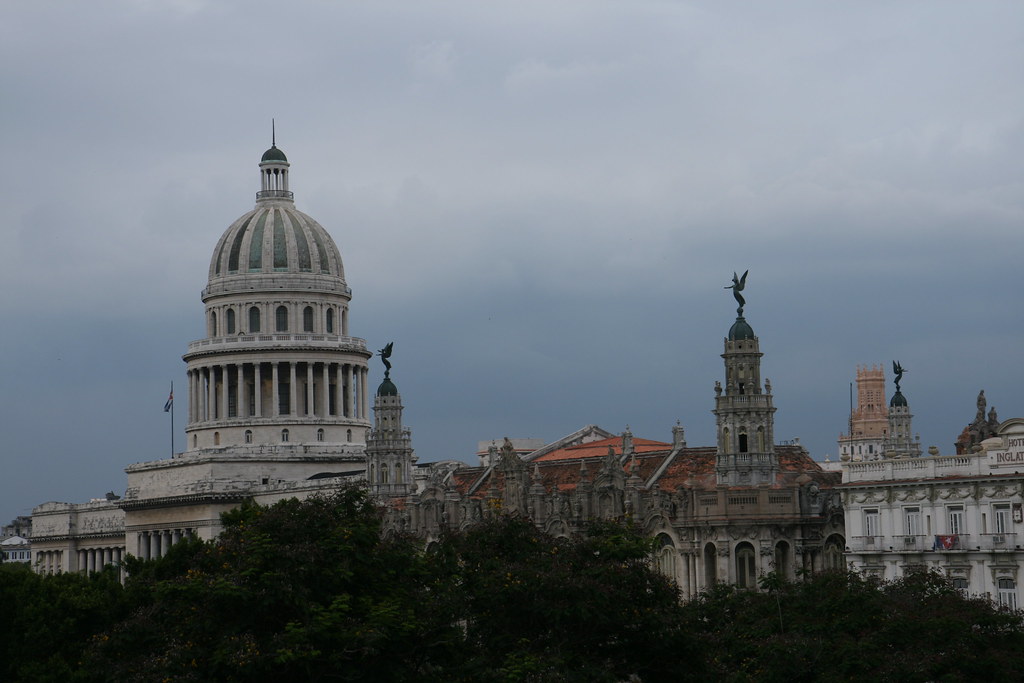
Cuba is a very interesting place. The history of the country and Havana is everywhere to see. The buildings from various rulers are everywhere to see, as is the diverse ethnic mix. It’s not like I was expecting, which was both good and bad.
By the time I reached Havana, I’d already been on holidays for two months. While that seems like a lot of fun, by the end of this time, it’s starts to be a bit of a grind. I was starting to look forward to being at home, sitting on my couch and watching a bit of tele. The constant drive to get out and see new stuff was getting a bit much. The last few days in Cuba, I was spending more time by the pool and less on the streets. I suppose that’s what you’re meant to do on a holiday, but I felt guilty, knowing there was good stuff out there to look at. Oh well, maybe next time!
What surprised me, was just how grim and depressing this place is. I was expecting the place to be a bit run down and poor, but I wasn’t ready for just how poor these people are. Sure, the cute 1950s cars everywhere are cool, but it’s from necessity, not from any great love of the period. These people are so poor, that’s all they have.
I’ve been to poor countries before, so the poverty didn’t really worry me. What was striking, was just how little there was to buy. Even in Myanmar or Morocco, every corner has a little shop selling drinks, food, fruit and various other stuff. Not in Cuba. The shops are few and far between. When you get into one, there’s a lot of shelves, but not much on them. What is there, is ridiculously expensive. It was pretty grim going into “Harris Brothers” and seeing basic necessities locked up in glass cases behind counters with bitchy staff to assist you.
The worst thing I saw, was an assistant helping a lady with a purchase. She was obviously a new mother, as she had the baby strapped to her front. The assistant was having a long discussion with her on the merits of buying disposable nappies. In most countries, you just push your trolley past the aisle, chuck them in and away you go. Here, the nappies were locked up behind a counter and were obviously very expensive for the poor lady. I found that rather shocking.
Another huge surprise was just how many tourists there were. Even more surprising, was how many of these tourists were English! As expected, there was a lot of Spanish tourists, but the Brits were out in force with their sandals and black socks. Some areas of the old town were so crowded with tour groups, that it was hard to move around.
After chatting to some people, I figured things out. Most people fly into Havana and go straight to an all inclusive beach resort to the east of town. They’re then bussed in for one day to experience the “real” Cuba. Some even throw in a few nights in a hotel in the city. Unfortunately, this seemed to be MY hotel. That explains the Chavs everywhere!
I had a good time in Havana. Walking around Havana Vieja is great, but there’s not that many other things to see and do. I think the trick is to go out and get drunk on rum every night and then lie by the pool. But if you’re going to do that, there’s really no need to come all the way to Cuba. As with a lot of places, the people seem great, but are being really let down by global politics. Viva la Revolution? Maybe...
Havana – Hotel NH Parque Central
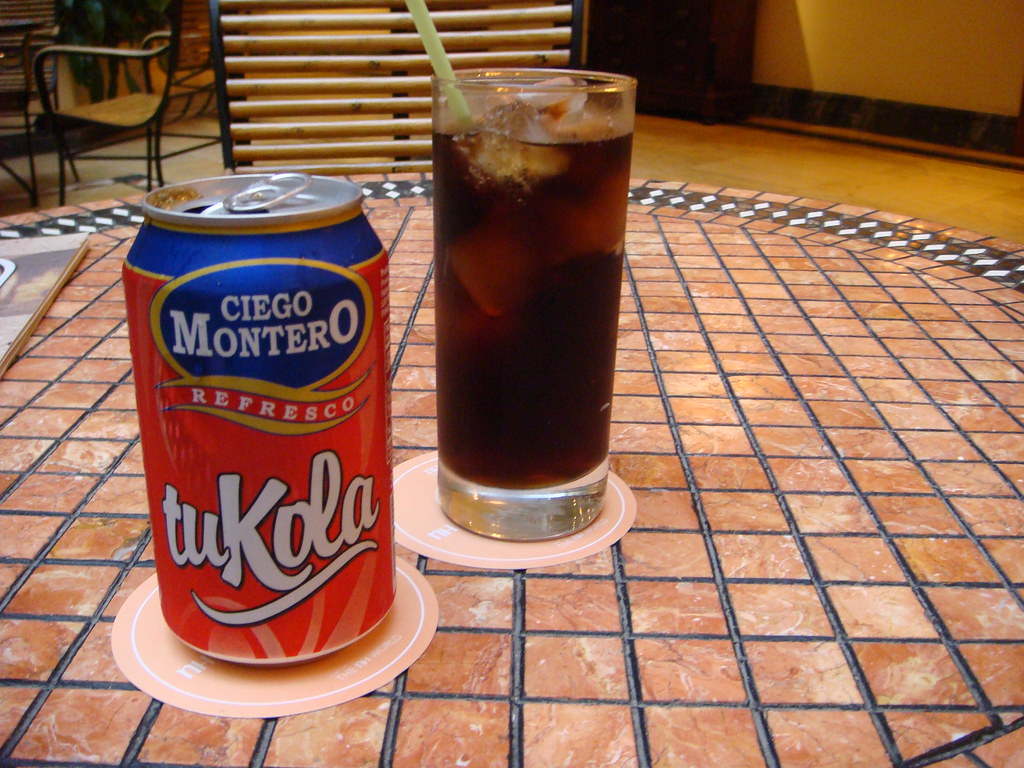
When staying in a poor country, it’s always nice to stay in a nice hotel. It insulates you from the poverty and gives you a sanctuary to retreat back to after a hard day out in the hustle and bustle. This was my theory when I booked a stay in this hotel. It mostly came up to standard, but there were a few annoying problems.
The hotel is in a great location. It’s in downtown Havana, right on Parque Central, just across the way from the Capitolio. My room overlooked the park, so I had a great view of trees and the Capitolio building. Good stuff. The other rooms have somewhat less exciting views. Half of them overlook the central atrium, whilst the others overlook a lot uglier parts of town.
The room itself was perfectly fine. It was clean, had a mini bar and a large bathroom. It was rather annoying, however, that a few times in the afternoon when I was in the room with the “Do Not Disturb” sign on the door, some of the staff came in! The whole point of the sign is to tell everyone to bugger off.
Actually, the staff was the main problem with this place. They just seemed so snobby and unwilling to help. The people at the business centre were just plain rude. I went there to check my email on their PCs. They stopped working and they accused me of breaking them! How rude. The front desk people were also really unhelpful. The whole point of staying in a posh hotel is to have the staff being nice to you. They all spoke English, so I’m guessing they were just rude!
The main reason I chose this hotel, is because it has a pool on the roof. Just the thing for relaxing after a hard day in the city. The pool is as described in the brochure. It’s of a reasonable size and the terrace has a great view over the city. The only problem is that everyone else in the hotel seemed to want to use the pool at the same time. Whenever I went up, there was a huge crowd of people – way more than the pool could really handle.
I also ran into the usual problem of the greedy German tourist. In Europe, the Germans have a reputation for hogging all the sun chairs. Their modus operandus is to get up early and put a towel or something on the chair to stop anyone else using it. They then wander off and come back a few hours later when they’re ready to use it. This is exactly what seemed to happen all the time. There were always a lot of empty sun chairs and not nearly enough people in the pool to account for them all!
One day, I lay down on a lounge that was empty. About an hour later, a German couple came up to me and accused me of stealing their chair. I politely told them that if they snooze, they lose! They were not impressed, but they did bugger off. Silly Europeans!
The other great feature of the hotel is the free buffet breakfast every morning. Well, it’s great in theory. There was a whole lot of weird stuff on the buffet that was all but indigestible. It filled me up each morning though, so it was well worth it.
I wouldn’t say that the hotel was the bets I’d ever stayed in, but given the option of staying here or in an authentic home stay, I’d pick this hotel every time!
Wednesday, July 11, 2007
Havana – Gran Teatro de La Habana
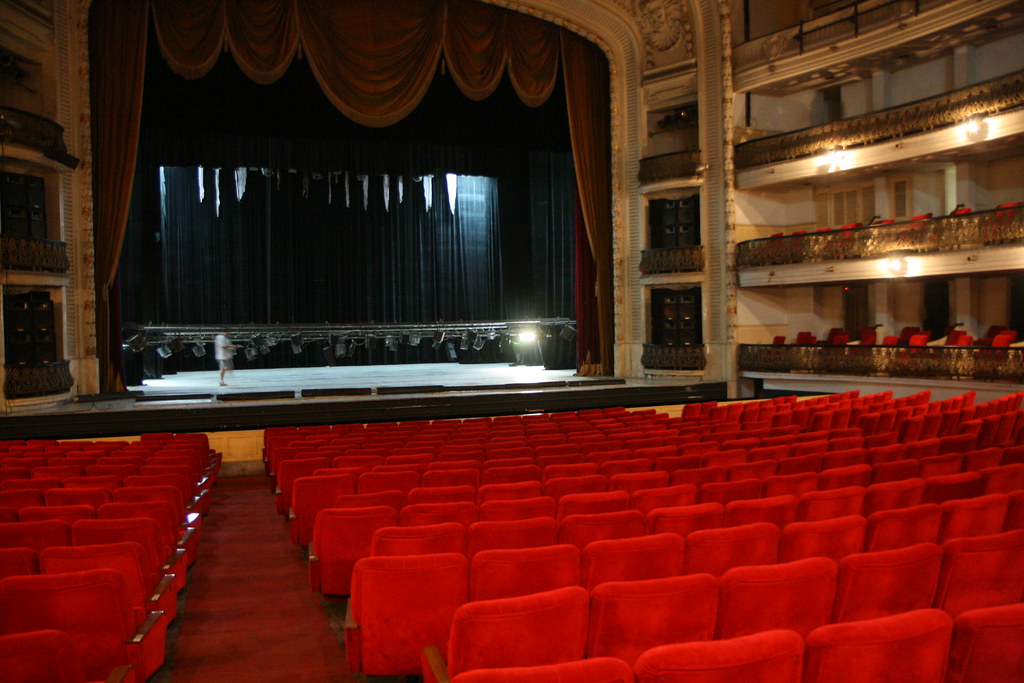
Of all the grand buildings in central Havana, the Grand Theatre is perhaps the grandest of them all. It was originally built as a Galician Social Club, but a theatre was added on later. It holds the distinction of being the oldest running theatre in the Western Hemisphere, but there’s more to recommend it than that.
For a small fee, you can have a private tour of the building. This takes you through all the good bits of the theatre, as well as a few less interesting bits. The tours are run whenever someone turns up with the visitor’s fee, so I had the tour lady to myself.
The tour covered the main theatre, the auditorium, as well as the back stage area. All this was quite interesting. The theatre, unfortunately, is showing its age. The auditorium has some new chairs, but the walls and ceilings are all faded versions of their former glory. It’s a bit sad really.
Attached to the theatre, is the social club part. The main floor of the building used to be a casino. It’s a massive area, but apart from the long bar, little remains of the casino. Instead, the room has been subdivided into a series of very ugly offices. This is pretty typical of Havana. If a building does not conform to the socialist ideal, it’s discarded and left to rot. I can imagine that within six months of the counter revolution, this building will be back to being a casino and a whole lot better looked after!
The backstage part of the tour was probably the most fun. They showed me the wires used to move the set around and I got to stand centre stage and look out onto the audience, which is not something you get to do every day in a 1,500 seat theatre. I had fun. The tour was cheap and short, so no complaints here!
Havana – Real Fabrica de Tabacos Partagas

Perhaps the most famous export from Cuba is the Cuban cigar. Due to the US trade embargo, they’re notoriously expensive and rare in that country. In other countries without this problem, they’re still expensive and a bit of a luxury. There are a number of cigar factories in Havana that you can visit. I went to the Partagas factory, maker of the world famous Monte Christo cigar.
The factor is located just behind the Capitolio building. At first, I thought it was just a shop, but it’s the real deal – a fully functioning cigar factory, right in the centre of town. They run tours every fifteen minutes and they’re incredibly popular. I’m not sure if that reflects people’s interests in cigars, or a lack of something better to do.
The tour take you through the whole process of generating a cigar. This is a pretty in your face tour. It’s not a tour where you watch the process from a railing overlooking the factory floor. The process involves a whole lot of people sitting around at desks with bundles of materials. You walk in amongst them all and the machinery. I doubt this sort of tour would last long in other countries. The first time someone slipped or was pushed into a machine, it would be over. It was fun though, as you got to see things up very close!
The process of making a cigar turns out to be pretty simple. A bunch of dried tobacco leaves are bundled together and then another leaf is wrapped around them. This is then compressed for an hour or so. One more leaf is wrapped around the cigar, then it’s time for a logo to be stuck on and they’re ready for boxing.
The skill of the people involved is pretty amazing. With a great deal of dexterity, they select their leaves, wrap them quickly and pop out a cigar. In a rare example of capitalism, the workers are paid based upon how many cigars they make in a day. This is a great encouragement for people to churn them out.
Whilst the work of the people is amazing to watch, the conditions they work under are not. The rooms are large, extremely hot and full of tobacco dust. It’s hot and smelly and the people are worked to the bone.
One thing I noticed straight away, is that everyone working on the cigar floor was young. There were no old people. One explanation is that young people are more nimble and able to churn the cigars out. The other explanation is that the conditions are so bad, that no one is able to last that long before becoming sick and having to retire. I think it’s a little bit of both. I definitely wouldn’t want to work there.
Apparently, cigars have the interesting ability to transfer nicotine into your body just by holding them in your hand. With cigarettes, you have to burn them and inhale them. Just handling cigars does the same. It makes you wonder what rolling cigars all day can do to your health! There was also a lot of finger licking going on in the process. The net result can’t be that healthy!
Apart from the health issues, the tour was quite interesting. I had no idea that’s how a cigar was made. There was also a bit of comic relief. As we wandered around the factory with our guide, another shady character followed us. Every time the guide was out of sight, he tried to sell us cigars. He was quite persistent, but as soon as the guide came back, he scurried off. Funny man!
The tour ended, as all good tours do, in the gift shop. Getting into the spirit of the tour, I bought a single cigar. This was the very first time I have ever bought a tobacco product. I felt dirty!
Despite the working conditions, it seems that no trip to Havana is complete without a trip to the cigar factory. There was a steady stream of tourists into the factory, so I guess it must be fun!
Tuesday, July 10, 2007
Havana – Necropolis Cristobal Colon
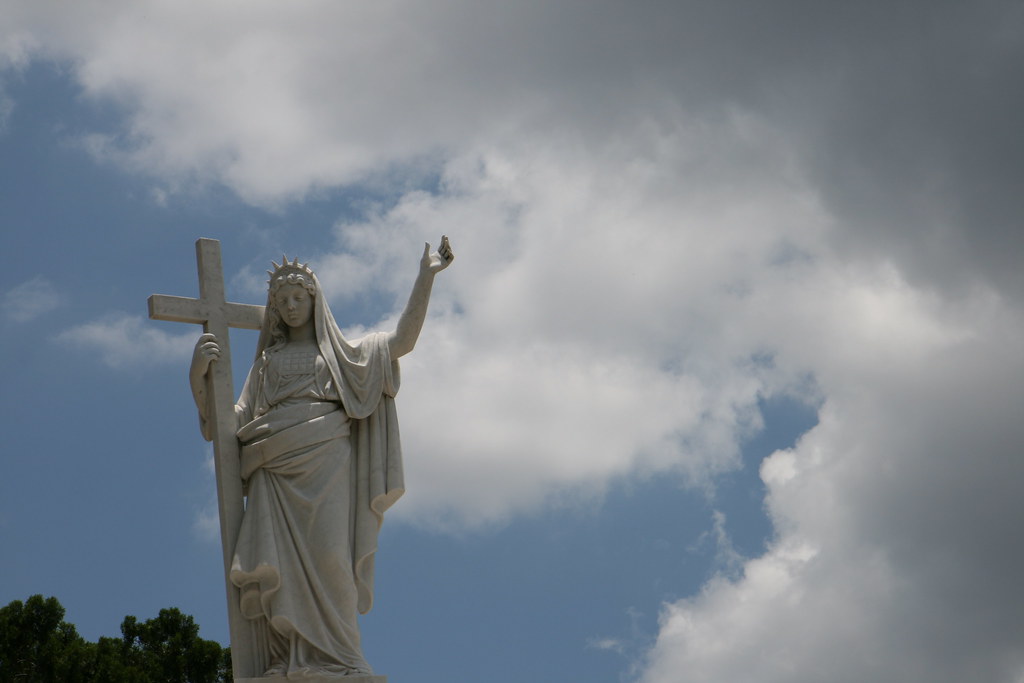
The great an glorious of Havana have been buried in the Necropolis Cristobal Colon since 1868. Not content with a simple headstone, this cemetery is jammed packed full of immense, ostentatious monuments.
Getting to the cemetery was a bit of a trauma for me. I decided to walk here from the Plaza de la Revolution. I could see the cemetery from the tower and it didn’t seem far. Off I went. I soon came across the cemetery, but what I didn’t realise, is that there’s only one entrance. This is a big place. A REALLY big place. From where I first struck the wall to the entrance was a huge trek.
What made the trek worse, is that it was through the middle of a poor neighbourhood. There were people running about all over the place. There were cars sitting on cement blocks, smashed windows. The whole deal. It was like walking through a war zone. I wasn’t quite sure if the people saying hello were being friendly or casing me out for a mugging. I’m sure they were just being friendly, but I didn’t want to hang around to find out.
After what seemed like an eternity, I managed to find the entrance. The big monuments are right near the entrance, so I was able to have a sit down and look at some of the monuments. The older ones are the most impressive ones. People obviously thought they were pretty important judging by the huge size of some of these things.
My personal favourite was a tomb built by a local antiquarian. It was built in the shape of a pyramid. Just the thing to make sure that people for the rest of time think you are a big geek.
Everywhere you looked were angels, Jesus, crosses and other miscellaneous symbols. There are also a few tombs that are the sites of pilgrimages. Far from being a spooky place, the cemetery felt like a big sculpture park. It was interesting to walk around, but this place is huge. I checked out the big ones and left.
Havana - Plaza de la Revolucion

As with all good revolutions, the Cuban revolution’s first task was to stop using all the buildings and build all new ones. The place where the Cubans built their new city is the Plaza de la Revolucion. Prior to the Revolution, it was just the Plaza de la Republica, so Revolution has a much better zing!
The main feature of the square is the memorial to the father of the revolution, Jose Marti. It’s a rather funky tower. It’s featured on the one peso note and is the tallest building Havana. It’s a kind of star shape, but with a lot of cool ornamentation up the sides. Best of all, you can catch an elevator to the top.
From the top, you get a great view over all of the city. Directly behind the tower, is the central office of the Communist party. This contains Fidel’s office amongst others. It’s a pretty nondescript building. The only outstanding feature is the large number of guards patrolling the area.
At the top, you also get a really good look at the vultures. Did I say vultures? Yes, yes I did! These birds congregate around any tall building in Havana. They seem to spend the entire day aimlessly circling around the tower. When they get tired, they land on one of the ledges of the tower, have a bit of a squawk and then go to sleep. It’s really cool to watch them up close riding the wind eddies.
Back at ground level, there is another attraction. It’s probably one of the most iconic buildings in Havana. It’s the Ministry of the Interior, but it looks like a block of flats. On the side is a massive portrait of Che Guevera. It’s a reproduction of the photo that is on just about every shirt for sale in Cuba. Along with it, is the slogan “Hasta la Victoria Siempre” or “Always towards victory”. Because of its scale and the stern look on Che’s face, it’s a very striking image. It’s not something I’ll soon forget.
The square itself is pretty barren. It’s just a big cement paved area. Not on the scale of Tiananmen Square in Beijing, it is still pretty large. There are a few power poles holding lights, but that’s it. Not exactly that inspiring.
The Plaza de la Revolucion is a taxi ride out of town, but definitely worth the trip!
Monday, July 9, 2007
Havana – Museo de la Cuidad

This museum started out to be like a lot of other museums in Havana – a grand old building left over from colonial times that has been transformed in an unconvincing way into a modern museum. That was, however, until I met the sassy staff.
The museum is housed in a lovely old building on Plaza de Armas. This building was built by the Spanish as the Governor’s residence. It follows the classic Spanish template – fancy front and a large courtyard in the middle.
The contents of the museum is a bit lacking in interest. It’s a whole bunch of miscellaneous junk that has been clumped together for want of a better place to put it. Wandering around is very dull. For a museum of the city, it didn’t have that much useful information on the history of the museum. It was mostly a whole bunch of military stuff – uniforms and cannons and such. Yawn.
When I reached the top floor at the back, however, things changed dramatically. There were two bored looking women sitting outside one of the rooms. I wasn’t sure if it was opened and walked straight passed. The ladies called me back. This is where the fun started.
These ladies, one in particular, was a total flirt. Once I walked in, she shut and locked the door behind us! Oh my, what had I got myself into! Luckily, she was just having a bit of fun. In baby Spanish so I could follow, she pointed out all the artefacts in the room. Unlike the other rooms, this one had some good stuff in it. It has the very first Cuban flag and a series of important portraits.
But that wasn’t what the ladies were interested in. Through my dodgy Spanish, I could tell she was saying “You’re sexy” and “Pretty man”. She was also leading me around by the arm and squeezing my biceps. Such a flirt!
At the back of the room, was some historic boat behind a velvet rope. She wanted me to get a photo, so she pulled back the velvet rope and insisted I go and have a proper look. Sassy
AND helpful!
I thanked the ladies for their help and started to walk out. The lady looked upset, so she grabbed my hand and started strutting down the room humming the wedding march! She was such a character, I had a smile on my face for the rest of the day!
So, the museum is a bit dull, but the ladies are a lot of fun! Oops, that sounds a bit sordid! Oh well, it is Havana after all!






